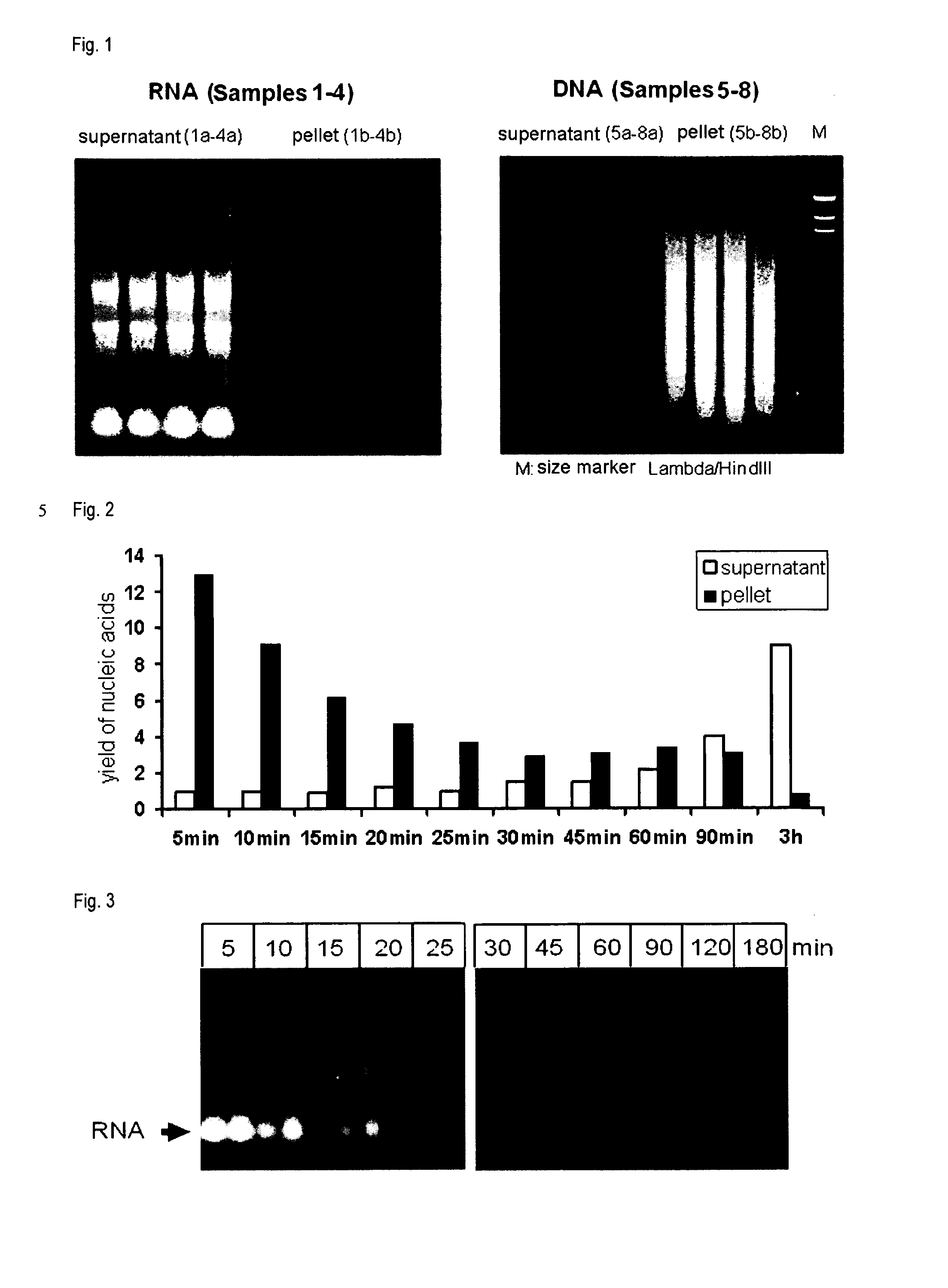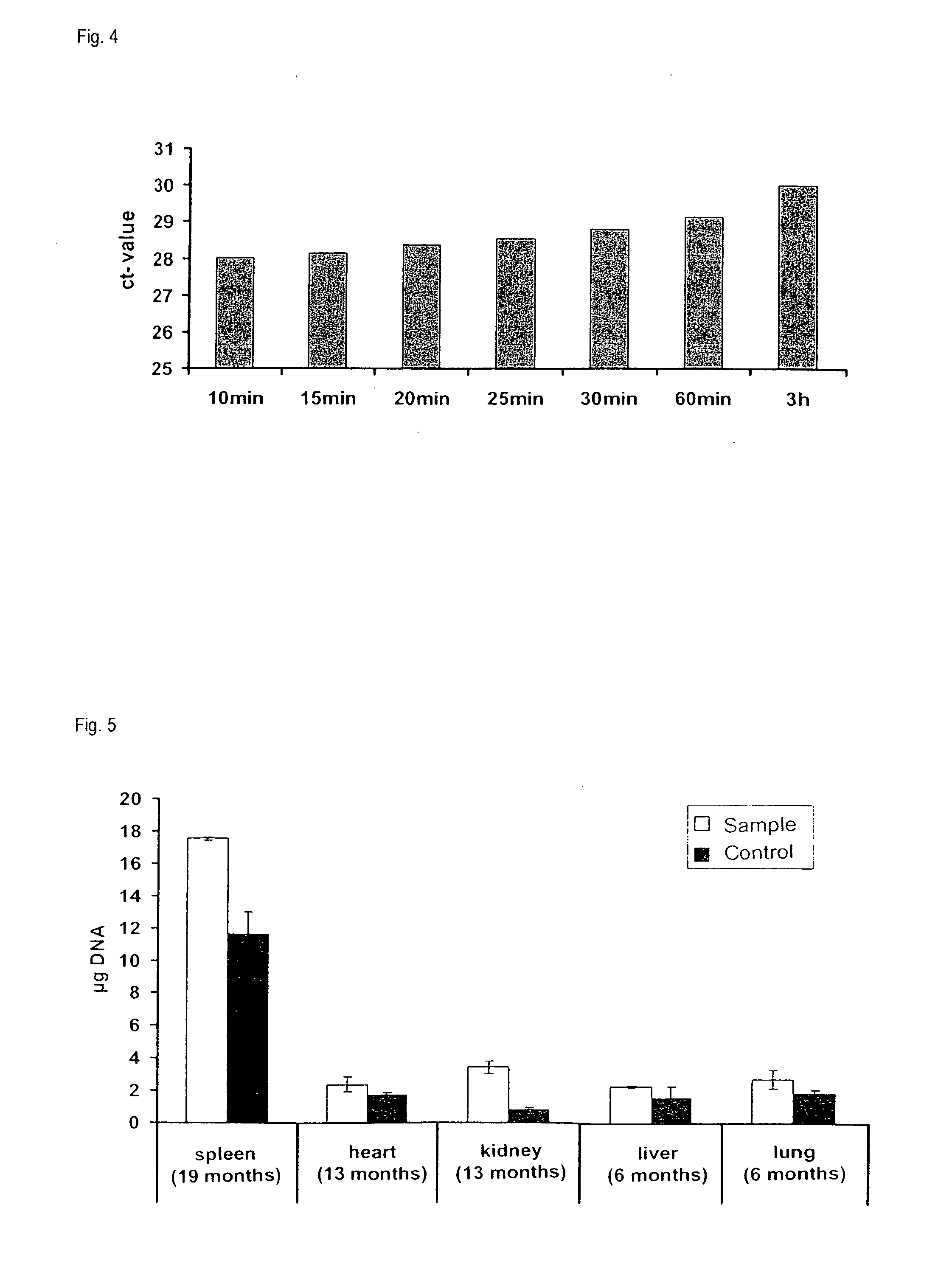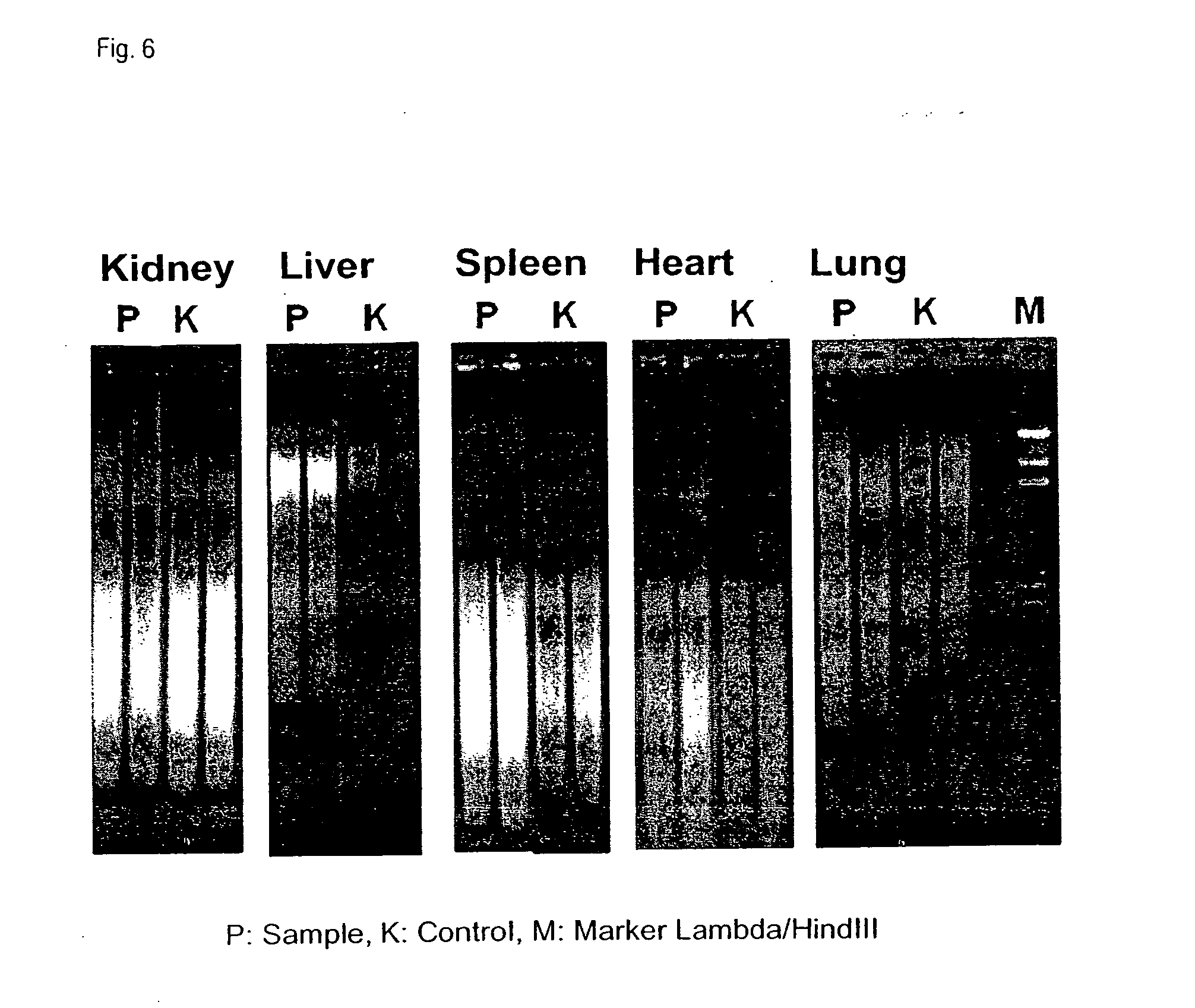Process for parallel isolation and/or purification of RNA and DNA
a technology of rna and dna, which is applied in the direction of fluid pressure measurement, liquid/fluent solid measurement, peptide, etc., can solve the problems of many morphological examinations only based on the possibility of dna or rna isolation from such samples, and the composition of sample materials is, in general, heterogeneous
- Summary
- Abstract
- Description
- Claims
- Application Information
AI Technical Summary
Benefits of technology
Problems solved by technology
Method used
Image
Examples
example 1
Separation of RNA and DNA by the Process According to the Invention
[0124]The samples used were formalin-fixed and paraffin-embedded tissue samples (FFPE samples) from rat liver which had been stored at room temperature for about 4 months after embedding. With the aid of a microtome, sections of a thickness of about 20 μm were prepared from these samples. In each case, one section per reaction was used. Components of the RNeasy FFPE kit and the QIAamp FFPE kit from QIAGEN were employed for the subsequent isolation of DNA and RNA from the processed samples.
[0125]For deparaffinization, the tissues were initially incubated in 1 ml of xylene for 10 min. After pelletization by centrifugation of the sample and removal of the supernatant, this treatment with xylene was repeated two more times. The samples were subsequently treated in each case twice with anhydrous ethanol followed by aqueous ethanol solutions (first 96% ethanol and then 70% ethanol) and dried at 37° C. for 10 min.
[0126]The ...
example 2
Effect of the Amount of Proteolytically Active Compound Used
[0135]The samples used for this experiment were formalin-fixed and paraffin-embedded tissue samples (FFPE samples) from rat liver which had been stored at room temperature for about 7 months after embedding. With the aid of a microtome, sections of a thickness of about 10 μm were prepared from these samples. In each case, two sections per reaction were used. Components of the RNeasy FFPE kit and the QIAamp FFPE kit from QIAGEN were employed for the subsequent isolation of DNA and RNA from the processed samples.
[0136]For deparaffinization, the tissues were initially incubated in 1 ml of heptane each for 10 min. After addition of 50 μl of methanol and mixing the sample was centrifuged, the supernatant was removed and the residue was air-dried at room temperature for 5 min.
[0137]The deparaffinized sample pellets obtained in this manner were treated with 150 μl of an aqueous solution comprising 20 mM Tris, 2 mM EDTA and 0.2% SD...
example 3
Reaction Time of the Proteolytically Active Compound
[0143]The samples used for this experiment were formalin-fixed and paraffin-embedded tissue samples (FFPE samples) from rat liver which had been stored at room temperature for about 5 months after embedding. With the aid of a microtome, sections of a thickness of about 20 μm were prepared from these samples. In each case, one section per reaction was used. Components of the RNeasy FFPE kit and the QIAamp FFPE kit from QIAGEN were employed for the subsequent isolation of DNA and RNA from the processed samples.
[0144]Deparaffination, rehydration, and drying of the sections were performed as described in Example 1. The deparaffinized sample pellets obtained in this manner were treated with 150 μl of an aqueous solution comprising 20 mM Iris, 2 mM EDTA and 0.2% SDS (pH 7) and mixed with 10 μl of a proteinase K solution (>600 mAU / ml) as proteolytically active compound. This mixture was incubated at 56° C. with shaking at 1400 rpm for up ...
PUM
| Property | Measurement | Unit |
|---|---|---|
| temperature | aaaaa | aaaaa |
| temperature | aaaaa | aaaaa |
| temperatures | aaaaa | aaaaa |
Abstract
Description
Claims
Application Information
 Login to View More
Login to View More - R&D
- Intellectual Property
- Life Sciences
- Materials
- Tech Scout
- Unparalleled Data Quality
- Higher Quality Content
- 60% Fewer Hallucinations
Browse by: Latest US Patents, China's latest patents, Technical Efficacy Thesaurus, Application Domain, Technology Topic, Popular Technical Reports.
© 2025 PatSnap. All rights reserved.Legal|Privacy policy|Modern Slavery Act Transparency Statement|Sitemap|About US| Contact US: help@patsnap.com



